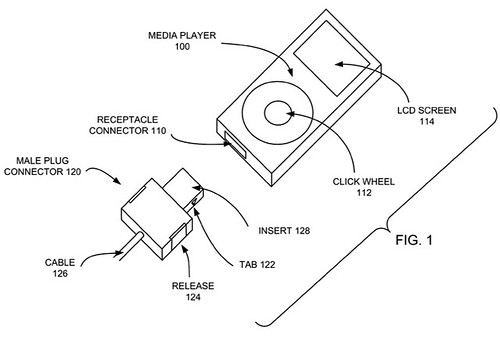
Greenpeace claims that Apple is the "least green" tech company. Does that really make any sense?
For years now, Apple has led the way in the technology sector on environmentally-friendly design concepts and business practices. But Greenpeace’s recent report indicating that Apple’s investment in a data center — reportedly for a soon-to-be-unveiled cloud data storage feature on the
iPhone 5 — doesn’t jive with Apple’s eco-ethics. What gives?
Anybody who is a big believer in Apple products knows that green technology and environmental concerns have long been a priority for their research and development. Regardless of where one charts on the ideological spectrum when it comes to environmental issues, one thing is for sure: Apple has been an honest broker in its environmental initiatives. While a cynic might suggest that the
green angle on Apple products is little more than a marketing pitch for its devoted customers, the end result of Apple’s eco-friendly developments are unquestionable.
Browse the various gadgets at Apple.com and you’re bound to notice that its most popular products boast a wide array of green-inspired features. For the MacBook series of laptops, Apple devotes an entire section to the environment, highlighting how an efficient power supply, advanced power management, 5.2 energy star qualification, and fewer toxins used in the construction of the design materials all lead to some of the greenest electronics out there on the market today.
The same is true with the iPad, iPhone, and iPod: Apple’s glass displays are recyclable, as are the aluminum chassis used on the MacBooks. In addition, Apple goes out of its way to package its products with an emphasis on minimalism, saving tons of cardboard, plastic, and other packaging materials.
But what is most impressive is Apple’s advancement in battery technology. For as much as carbon emissions are the
flavor of the month when it comes to the environmental debate, fewer things pollute a landfill more than alkaline batteries and the
grandpappy of rechargeable battery technology: the NiCad. Apple’s LiON battery technology — which really came into its own in 2010 with the iPad and MacBook Pro — is simply out of this world, allowing users to get maximum longevity and performance out of the battery packs used to power their mobile devices.
Given all of the efforts that Apple has made to accommodate environmental concerns, does it strike anyone as strange that an eco-activist organization like Greenpeace would levy such a
scathing claim against them, labeling Apple as the “least green” tech company in the world?
It is, in effect, a
green libel.
Greenpeace’s report, which is entitled
How Dirty is Your Data?, is specifically targeting data centers throughout the world who rely on coal-fueled electricity to power their energy needs. The Guardian reported that, “The facility’s power will be supplied by Duke Energy, with a mix of 62% coal and 32% nuclear.” Apple’s top ranking on Greenpeace’s list stems directly from their recent purchase of petrabytes of data storage at this facility in North Carolina. In case you didn’t hear about it, this investment by Apple is most likely going to account for ushering in cloud data storage on the next iPhone 5 — something that the vast majority of avid iPhone users are incredibly excited about.
The Guardian goes on to state that Greenpeace’s findings are little more than
an educated guess: ”Greenpeace drew on publicly available information on investments made in data centres, to estimate the maximum power these facilities will consume, and matched that information with data from the government or utilities.” In short, their findings are mere speculation, in spite of the fact that they are reported
empirically.
Guess what, folks — you can’t power petrabytes and petrabytes of data storage for all of the music, photos, videos, and files that we love — not to mention the vast amounts of data storage that top corporations and governments rely on to keep commerce and services running — with a few windmills. The Guardian says, “Data centre energy demand already accounts for 1.5% to 2% of world electricity consumption and is set to quadruple over the next 10 years.”
Regardless of what we may think of coal-powered electricity, we have still yet to come up with a means of powering high performance technology assets like mass data servers with anything less than fossil fuels (or nuclear power, though these days it isn’t the most popular alternative power source). It is unrealistic for Greenpeace or any other iPhone user for that matter to desire more power, more storage, more productivity, and more
Appley goodness without their being an increase in the carbon footprint.
We cannot have our cake and eat it, too.
The good news is that Apple has already been so pro-active in reducing its carbon footprint that one could argue that it has some leeway for expanding its data servers. After all, imagine how much
less power is used throughout the world on Apple machines, thanks to all of the above-mentioned eco-features? Given all of these advancements, is Greenpeace claiming that Apple is a bigger eco-offender than the top Chinese technology companies, which do not have to abide by any carbon standards whatsoever?
Scan the Greenpeace website, and you quickly come to realize that destroying the coal industry is their primary focus. Whether or not you agree or disagree with coal power or Greenpeace, you have to ask yourself this question: is Apple
really the best company to bully over coal-powered electricity and environmental responsibility?
 Apple has sent out an A5-equipped iPhone 4s to developers. does it hint at the iPhone 5?
Apple has sent out an A5-equipped iPhone 4s to developers. does it hint at the iPhone 5?









 Greenpeace claims that Apple is the "least green" tech company. Does that really make any sense?
Greenpeace claims that Apple is the "least green" tech company. Does that really make any sense?



 Apple's patent for the so-called "Smart Bezel." Will it end up on the iPhone 5?
Apple's patent for the so-called "Smart Bezel." Will it end up on the iPhone 5?







